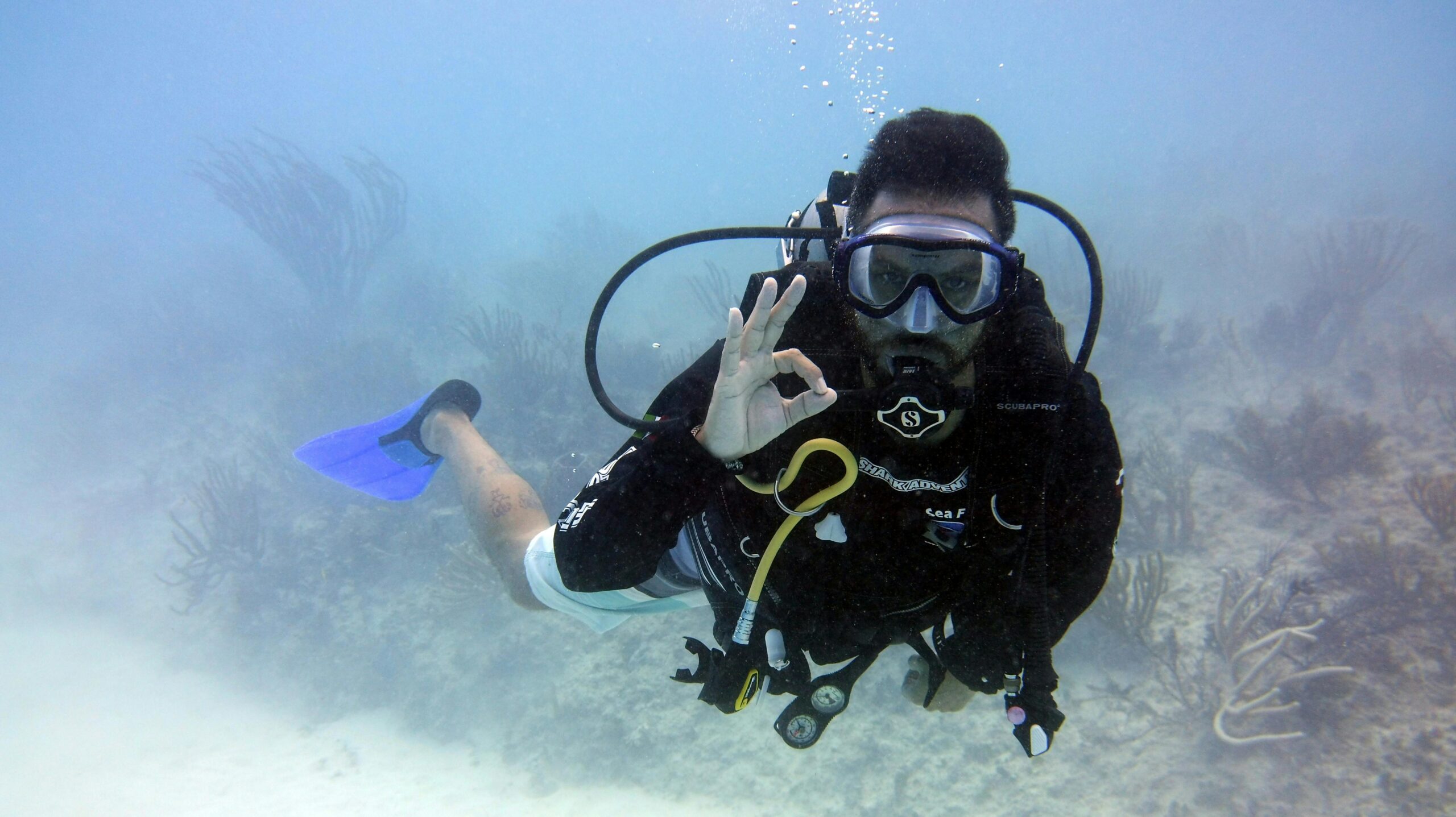The underwater world holds an unparalleled allure—a realm of vibrant colors, intricate ecosystems, and encounters with majestic marine life that captivate the human spirit. For dedicated enthusiasts, the pursuit of the ultimate dive is a lifelong quest, a journey to uncover the planet’s most extraordinary aquatic wonders.
This exploration goes beyond mere sightseeing; it delves into the heart of what makes a location truly exceptional for scuba diving. From unparalleled biodiversity to unique geological formations, specific diving conditions, and a commitment to conservation, this guide provides a comprehensive look at the world’s premier scuba diving destinations.
Whether you’re a beginner seeking tranquil coral gardens or an advanced diver craving adrenaline-pumping drift dives with sharks, this guide will help you plan your next underwater adventure responsibly and sustainably.
Essential Considerations for Your Dive Adventure
Embarking on a global dive adventure requires careful planning. Various factors—such as seasons, dive conditions, and skill level—significantly influence the underwater experience.
When to Go: Navigating Dive Seasons
Timing is everything in scuba diving. Seasonal variations affect marine life behavior, water conditions, and visibility. While some destinations offer year-round diving, specific months promise the most spectacular encounters.
- Galapagos Islands (Ecuador):
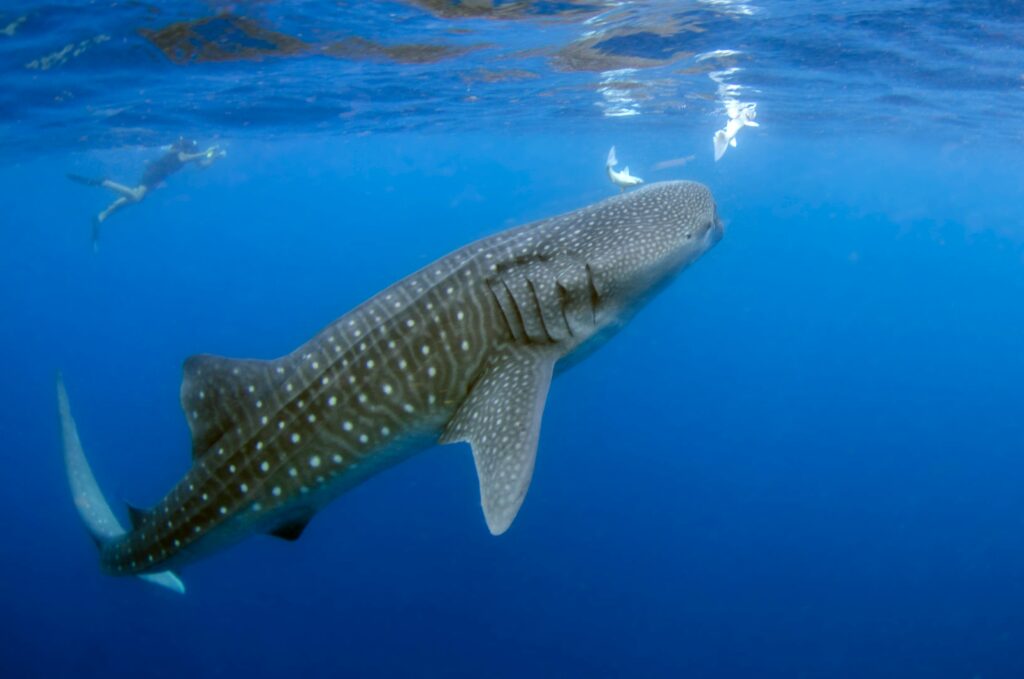
- Whale Shark Season (June–November): Cooler, nutrient-rich waters attract large pelagics.
- Manta Season (December–May): Warmer, calmer waters with increased visibility, ideal for hammerhead sightings.
- Maldives:
- Dry Season (December–April): Excellent visibility, calm seas—perfect for beginners.
- Wet Season (May–November): Stronger currents but prime for whale sharks and manta rays.
- Sipadan Island (Malaysia):
- Best from April to December, with peak hammerhead sightings in June–August.
Pro Tip: If you’re chasing big marine life, be prepared for stronger currents and lower visibility—nature’s trade-off for epic encounters.
Understanding Dive Conditions: Visibility, Currents, and Temperature
Three key factors shape your underwater experience:
- Visibility:
- Palau boasts 50m+ visibility, while Silfra Fissure (Iceland) offers an astonishing 100m+ clarity.
- Sipadan can vary from 5m to 50m depending on currents.
- Currents:
- Galapagos, Cocos Island, and the Red Sea are famous for strong drift dives.
- Reef hooks are often used in high-current areas to maintain position without damaging coral.
- Temperature:
- Raja Ampat (31°C / 89°F) allows for thin wetsuits, while Silfra (2-4°C / 35-39°F) demands a drysuit.
- Colder waters often attract larger pelagic species due to nutrient-rich upwellings.
Matching Your Skill Level to the Destination
Not all dive sites are created equal. Some require advanced certifications due to depth, currents, or technical challenges.
- Beginner-Friendly:
- Great Barrier Reef (Australia) – Calm, shallow reefs.
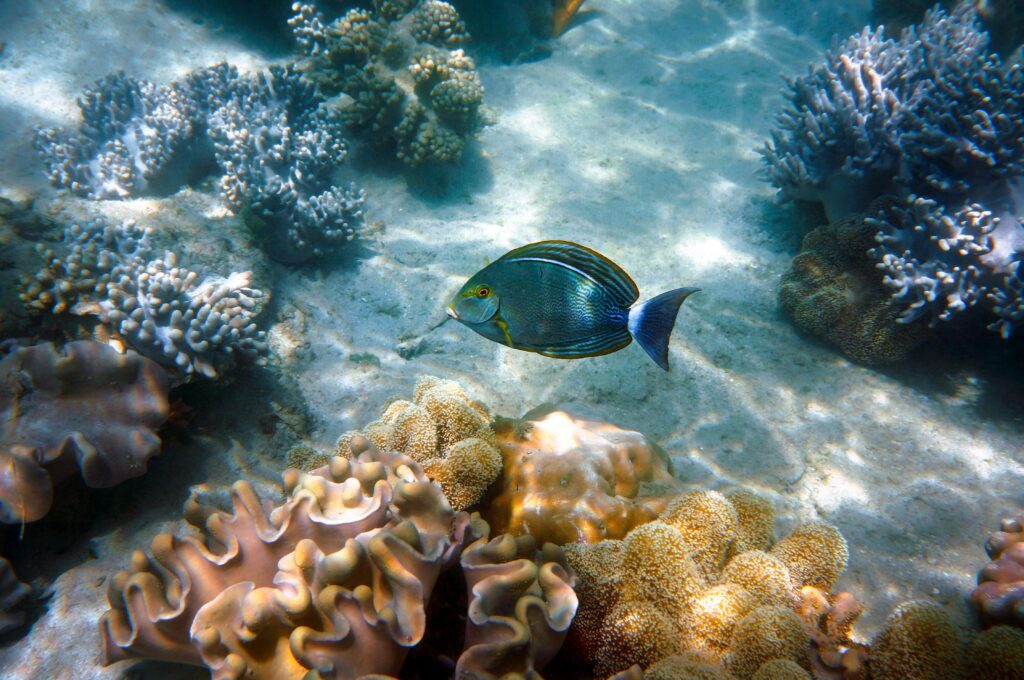
- Maldives (Banana Reef) – Gentle conditions with abundant reef fish.
- Intermediate:
- Raja Ampat (Cape Kri, The Passage) – Moderate currents, vibrant marine life.
- Red Sea (Elphinstone Reef) – Drift dives with sharks.
- Advanced Only:
- Galapagos (Wolf & Darwin Islands) – Strong currents, deep drops.
- Cocos Island (Costa Rica) – Remote, pelagic-heavy dives.
Safety First: Always dive within your certification limits. Advanced training (AOW, Deep Diver, Drift Diver) opens doors to more thrilling sites.
The Imperative of Responsible Diving & Conservation
The ocean’s beauty is fragile, and divers have a duty to protect it. Sustainable tourism isn’t optional—it’s essential for the future of marine ecosystems.
Key Principles of Responsible Diving
- Perfect Buoyancy Control – Avoid touching coral or stirring sediment.
- Never Touch or Chase Marine Life – Disrupting natural behavior harms ecosystems.
- Use Reef-Safe Sunscreen – Chemicals like oxybenzone bleach coral.
- Support Eco-Conscious Operators – Choose dive centers with sustainability certifications.
- Participate in Citizen Science – Report sightings (e.g., whale sharks, coral health).
Threats to Marine Ecosystems
- Climate Change (coral bleaching, rising temperatures).
- Overfishing & Illegal Fishing (depletes shark populations).
- Pollution (plastics, microplastics, sewage runoff).
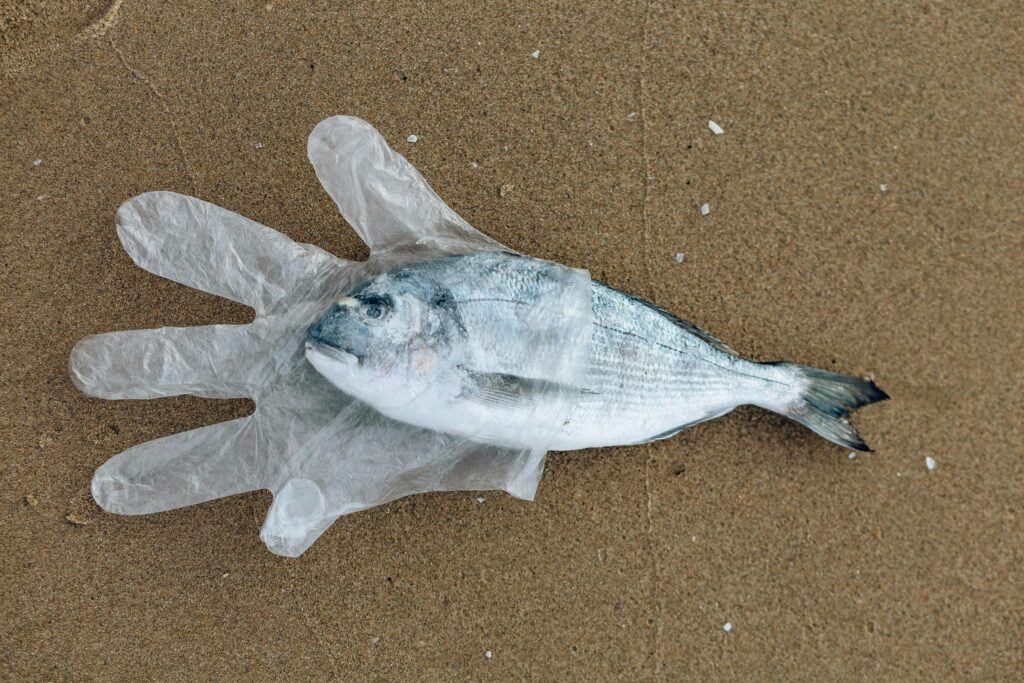
- Overtourism (anchor damage, reef stress).
Did You Know?
- Sipadan Island closes every November to allow marine life recovery.
- Raja Ampat’s reefs are under threat from nickel mining for electric car batteries.
The World’s Premier Scuba Diving Destinations
Here’s a deep dive into the planet’s most breathtaking underwater realms.
1. Raja Ampat, Indonesia – The Epicenter of Marine Biodiversity
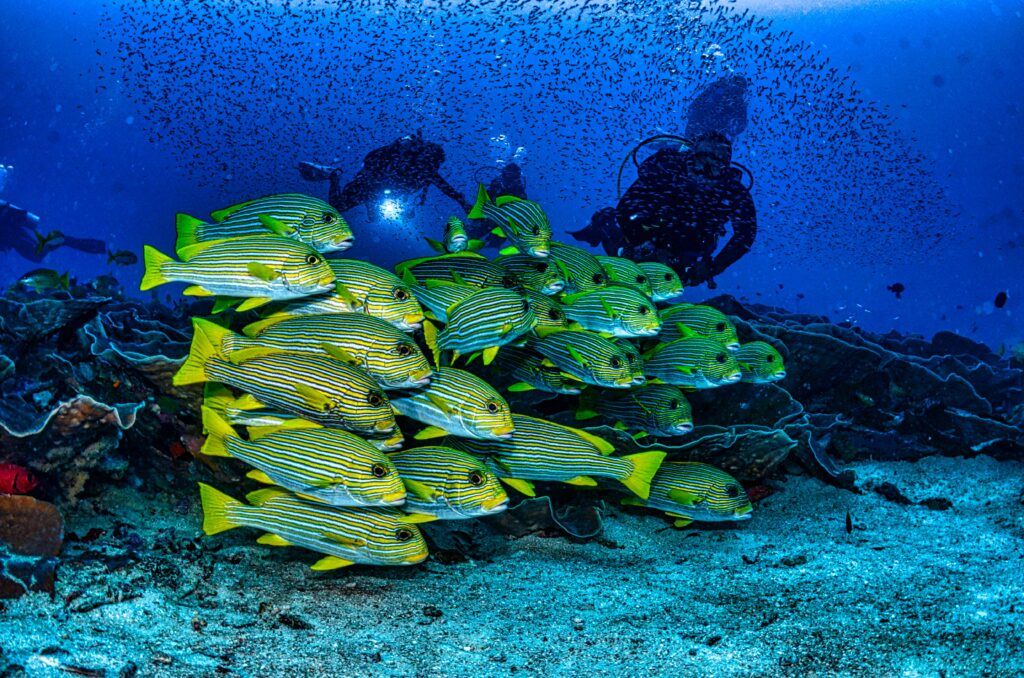
- Why Dive Here?
- Home to 75% of the world’s coral species.
- Over 1,500 fish species, including wobbegong sharks and manta rays.
- Top Sites:
- Cape Kri – Record-breaking fish diversity (374 species in one dive!).
- Blue Magic – Pelagic action with reef sharks and hammerheads.
- Best Time: September–April (manta season).
- Threats: Nickel mining, overtourism, coral bleaching.
2. Galapagos Islands, Ecuador – Big & Rare Marine Life
- Why Dive Here?
- Schooling hammerheads, whale sharks, marine iguanas.
- Evolutionary hotspot (Darwin’s inspiration!).
- Top Sites:
- Darwin’s Arch – Hammerhead vortexes.
- Gordon Rocks – The “washing machine” currents.
- Best Time: June–Nov (whale sharks), Dec–May (hammerheads).
- Skill Level: Advanced (strong currents, cold water).
3. Great Barrier Reef, Australia – The World’s Largest Coral System
- Why Dive Here?
- 1,500+ fish species, 400+ coral species.
- UNESCO World Heritage Site.
- Top Sites:
- SS Yongala – Legendary wreck teeming with life.
- Agincourt Reef – Beginner-friendly coral gardens.
- Best Time: June–October (cooler, better visibility).
- Threats: Mass bleaching (4 events in 7 years).
4. Red Sea, Egypt – Wrecks & Resilient Reefs
- Why Dive Here?
- SS Thistlegorm – WWII wreck with trucks, guns, and sharks.
- Coral reefs resistant to warming.
- Top Sites:
- Brothers Islands – Shark-filled drifts.
- Elphinstone Reef – Walls of soft coral.
- Best Time: Year-round (summer for calm seas, winter for pelagics).
5. Maldives – Atolls of Pelagic Dreams
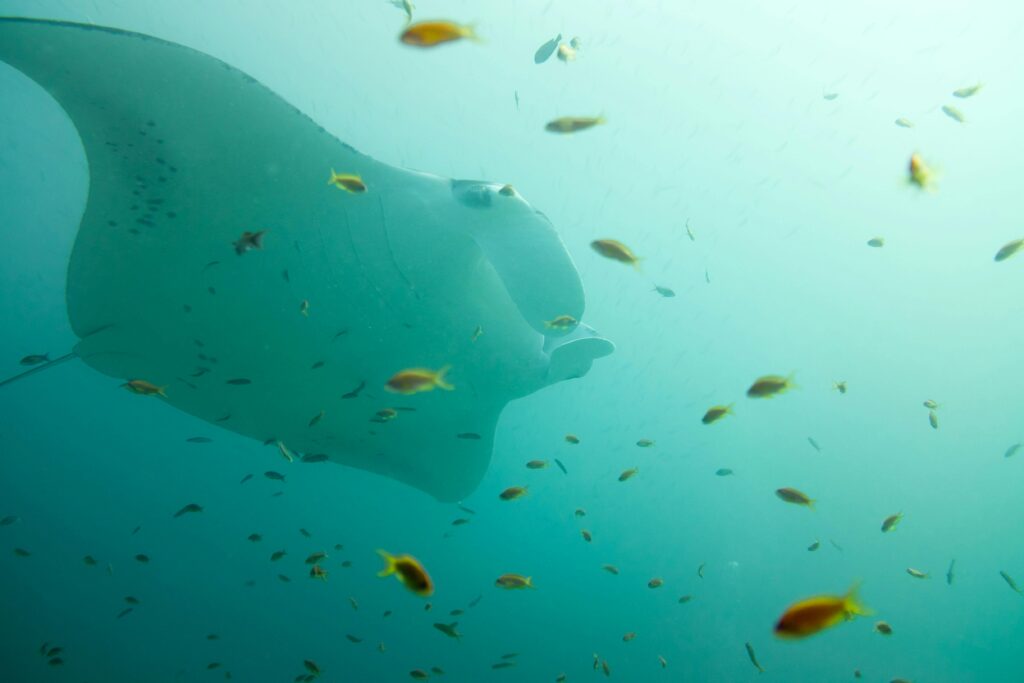
- Why Dive Here?
- Manta rays, whale sharks, reef sharks.
- Crystal-clear lagoons.
- Top Sites:
- Manta Point – Cleaning station for mantas.
- Fish Head – Grey reef shark hotspot.
- Best Time: Dec–Apr (dry season), Aug–Nov (manta peak).
6. Sipadan Island, Malaysia – The Barracuda Tornado
- Why Dive Here?
- Barracuda tornadoes, 20+ turtles per dive.
- Strict conservation (only 120 divers/day).
- Top Sites:
- Barracuda Point – Famous fish vortexes.
- Turtle Tomb – Underwater cave system.
- Best Time: April–December.
- Skill Level: Advanced (AOW required).
7. The Great Blue Hole, Belize – A Geological Marvel
- Why Dive Here?
- Giant marine sinkhole with stalactites.
- Nurse sharks, Caribbean reef sharks.
- Best Time: November–April.
- Threats: Coastal development, bleaching.
8. Silfra Fissure, Iceland – Dive Between Continents
- Why Dive Here?
- Touch two tectonic plates!
- 100m+ visibility (clearest water on Earth).
- Best Time: Year-round (summer for more daylight).
- Gear Required: Dry suit (water is 2-4°C).
9. Cocos Island, Costa Rica – Realm of Giants
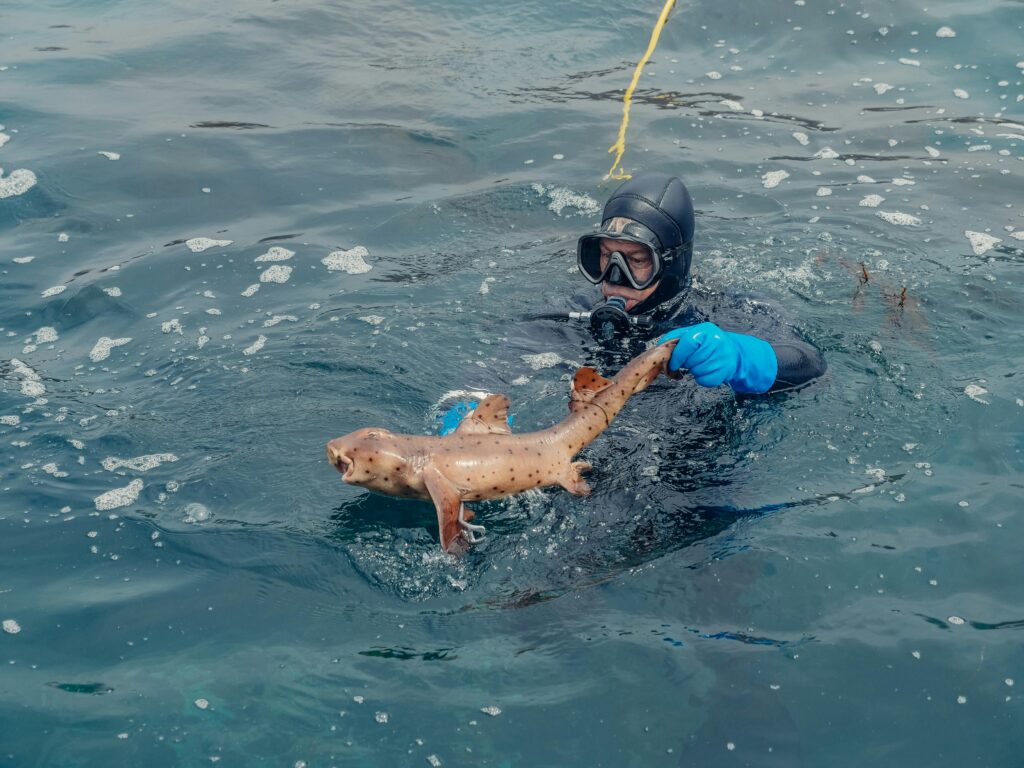
- Why Dive Here?
- Schooling hammerheads, giant mantas.
- Remote, accessible only by liveaboard.
- Top Sites:
- Manuelita – Hammerhead cleaning stations.
- Dirty Rock – Whale shark sightings.
- Best Time: May–December (rougher seas but best for big animals).
- Skill Level: Advanced only (strong currents).
Liveaboards vs. Resorts
- Liveaboards – Best for remote sites (Galapagos, Cocos).
- Resorts – Ideal for flexibility (Maldives, Raja Ampat).
Essential Gear Checklist
| Item | Purpose |
|---|---|
| Mask & Snorkel | Clear vision, surface swimming |
| Wetsuit/Drysuit | Thermal protection |
| BCD & Regulator | Buoyancy control, air delivery |
| Dive Computer | Tracks depth, time, safety stops |
| Safety Sausage | Surface signaling |
Safety Rules Every Diver Must Follow
- Never hold your breath (risk of lung overexpansion).
- Equalize early and often (prevent ear injuries).
- Ascend slowly (max 9m/min, safety stop at 5m).
- Monitor air supply (never run out underwater).
- No flying within 18-24 hours after diving (DCS risk).
The Future of Diving: Our Role in Ocean Conservation
The ocean’s health is declining, but divers can be its strongest advocates.
How You Can Help:
✔ Join coral restoration projects (e.g., Great Barrier Reef).
✔ Report illegal fishing (Cocos Island uses satellite tech).
✔ Reduce plastic use (avoid single-use plastics on trips).
✔ Choose eco-friendly operators (look for Green Fins, Blue Oceans certifications).
Final Thought:
“We don’t inherit the ocean from our ancestors; we borrow it from our children.”
Conclusion: Your Next Underwater Adventure Awaits
From the biodiversity of Raja Ampat to the shark-filled waters of the Galapagos, each destination offers a unique underwater spectacle. But with great diving comes great responsibility—always prioritize safety, respect marine life, and support conservation efforts.
Where will your next dive take you? 🌊🐠
cathaypacific.comA guide to the top scuba diving destinations and when to go
